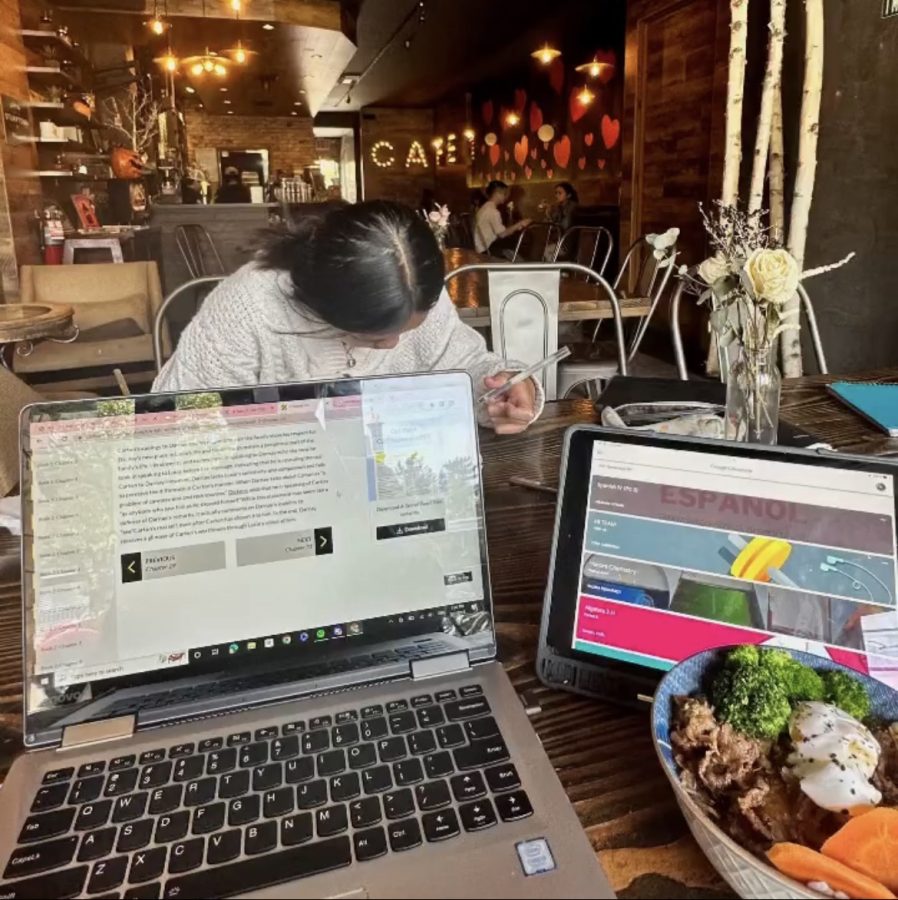By Noah Sheidlower
The United States was built on the premise that people of all backgrounds can coexist within society; however, in the last few month, discrimination, racism, and prejudice have all run rampant. But if you go just a few miles west of Great Neck, America’s initial values can readily be seen. While popular for its array of sports complexes and airports, Queens is arguably the haven of cultural diversity in the northeastern United States with its numerous ethnic pockets that each convey their specific values through food. Therefore, educating yourself on these communities and their foods not only satisfies your senses, but also betters your understanding and appreciation for others’ backgrounds.
Astoria: Astoria, known as Little Greece, is home to a large distribution of Greek restaurants, small bakeries, and marketplaces. While more modern Greek fare, such as gyros and souvlaki, can be found throughout Astoria, many Greek restaurants pride themselves on their fresh fish, which is often prepared with lemon, rice, and potatoes. Taverna Kyclades, a small restaurant with friendly service, offers a massive array of fish from stuffed sole to sea bass, and Loukoumi Taverna, a cozy establishment situated on a quiet residential street, serves creative Greek cuisine ranging from braised octopus salad to stewed rabbit in a savory sauce. Astoria heavily relies upon their markets as well where the freshest olives and cheeses can be found, especially a firm, mild cheese known as haloumi. Astoria also has a small Egyptian section where you can find koshary, a mixture of pasta, chickpeas, and rice served in a tomato sauce.
Long Island City: This modernized section of Northeastern Queens houses some of the most impressive European, Latin American, and Asian restaurants found in all five boroughs. With every restaurant serving a different cuisine, walking in any direction can lead someone to a one-of-a-kind dining experience. I recommend Jora, a contemporary Peruvian restaurant that uses simple ingredients to create delightful flavor combinations exemplified by their paella with squid, octopus, and mussels. In addition, John Brown Steakhouse, a Texas-inspired barbecue eatery with roadhouse decor and friendly service, serves up succulent meats like pulled pork and side dishes such as sweet baked beans with tender brisket.
Flushing, College Point, and Elmhurst: These three neighborhoods are often classified as Queens’ Chinatowns, with Flushing being the largest and most well-known. Flushing is known for its food courts, hole-in-the-wall dumpling eateries, and hand-pulled noodle shops, where one can find cuisine originating from all regions of China. New York Food Court and Golden Mall contain numerous cheap restaurants where one could experience Northern, Southern, and Western Chinese cuisine in one sitting. Flushing is also considered to be the focal point of Korean cooking, where renowned barbecue and seafood restaurants combine traditional preparations with modern cooking styles to create memorable culinary experiences. Most people are not familiar with College Point Chinatown, which is only a few blocks long, but features Michelin Guide rated restaurants specializing specifically in spicy Szechuan cuisine like Little Pepper Restaurant. Elmhurst is more widely known for its southern Chinese restaurants as well as Southeast Asian restaurants due to the large Malaysian and Indonesian population. Uncle Zhou Henan Restaurant in Elmhurst is one of the best Chinese options in all of Queens, offering savory dumplings, noodle soups with freshly prepared hand-cut thick noodles, and an oily “big tray of chicken” with chilies and garlic.
Jamaica: Jamaica is often overlooked by many Long Island residents, as it is not the most affluent area in Queens. That being said, Jamaica and nearby neighborhood Ozone Park are Caribbean food paradises, offering authentic Jamaican, Trinidadian, and Guyanese classics, along with a handful of notable Mexican, Dominican, and Asian restaurants. For the freshest roti, an Indian-inspired Trinidadi flatbread stuffed with vegetables or meat, go to Anita’s Roti Shop, a small gem with a simple atmosphere and spicy, home-cooked dishes. My personal recommendation is Spicy Lanka, a Sri Lankan restaurant whose menu combines traditional Sri Lankan cuisine with contemporary cooking styles. This restaurant is strikingly comparable to the Trinidadian restaurant across the street since both use similar spice combinations due to common cultural roots (West Indian food is inspired by Indian and Sri Lankan cuisine). While there, make sure to try their kothu, a rather spicy dish consisting of finely chopped roti with a choice of protein and vegetables.

Jackson Heights/Woodside: These two areas encompass the cuisines from every corner of Southeast Asia, with large Indian, Himalayan, Filipino, and Chinese communities, as well as a large Latin American population. Jackson Heights is well-known for their two-block Little India where restaurants like Jackson Diner serve up spicy Indian fare in a bustling setting. Just a few blocks over is a small enclave featuring Nepalese and Tibetan cuisine, such as Lali Guras and Cholsum Tibetan Restaurant. These two restaurants are both known for their momos, Tibetan dumplings filled with hearty meats and vegetables, as well as their curries served in the form of a thali, a tray with protein and rice, vegetable side dishes, chutneys, and often soup or tingmo, a steamed bread. Entering Woodside, Filipino food becomes the prominent Asian cuisine, where restaurants such as Tito Rad’s offer lumpia, Filipino spring rolls, pancit palabok, meat or seafood over a bed of soft noodles, and pork adobo—tender pork braised in vinegar, soy sauce, and bay leaves.
Glendale/Ridgewood: Although not known as a food paradise like other areas of Queens, these two neighborhoods house European populations that share their food and culture with local residents in both restaurant and bakery settings. In Ridgewood, Pravue Cafe puts Albanian cuisine on the Queens map, delivering high quality bureks, or fried spinach and beef pinwheels, Qevapi, ground meat kebabs seasoned with red pepper, and Albanian style burgers. Markets such as Morscher’s Pork Store display an expansive selection of German and Eastern European meat products like kielbasa, a Polish sausage. In Glendale, there are a handful of German restaurants, such as Zum Stammtisch, that serve tender schnitzel, or breaded pork, roasted pork shank, and daily specials that combine all sorts of proteins with traditional red cabbage and potatoes.
Whitestone: Most food enthusiasts define Whitestone as the Little Italy of Queens because of its abundance of Italian restaurants and markets from as north as Lombardy to as south as Sicily. Whitestone offers the freshest seafoods, the richest cheese, and the smoothest pastas of any place in Queens. Restaurants such as Riviera Ristorante mix the meats of the North with the seafood of the South to create a full Italian dining experience. Il Nocello, one of the highest rated eateries in Whitestone, combines traditional seafood preparation with modern sauce and vegetable combinations to produce dishes such as linguini with clams, mussels, and shrimp in a light red oil sauce and scallops bathed in a creamy butter sauce.

Corona: Corona is one of the least touristy but most ethnically diverse locations in all of Queens; the second you see street sellers with soccer jerseys, smell the corn tortillas baking next to the sweet breads of bakeries, hear the shouts of excited soccer fans, and taste the roasted rotisserie chicken with rice and sweet plantains, you immediately feel as if you are in South America, rather than in Queens. For Mexican food, try Tortilleria Nixtamal’s tacos al pastor with grilled pork and pineapple. Sabor Peruano is well-known for their Peruvian rotisserie chicken (seasoned with just a little salt and pepper) and their grilled steak with fried rice. For Cuban food, Rincon Criollo prepares a fantastic combination of tender braised beef with peppers and onions as well as a Cuban style paella with fresh seafood. Adding to the diverse food scene, Quisqueya Restaurant offers Dominican food, a cuisine that is hard to find throughout Queens. While there, try their succulent goat stew with rice and beans or their breaded pork.















